General presentation of the EDELWEISS-III experiment
EDELWEISS is a french acronym meaning "experiment to detect WIMPs in an underground site". WIMPs are not french ;-) , they are hypothetical, Weakly Interacting and Massive Particles.
A cosmological quest
Current astrophysical observations tend to show that, if Einstein's laws of gravitation are correct, then there must be some new kind of matter at different scales in our Universe. It is called Dark Matter. The gravitational effects of Dark Matter are observed, for examples, with the cosmic microwave background at 3K, with gravitational lensing observations, clusters of galaxies, measurements of "rotation curves" of galaxies...
In particular some dark matter should exist in our own galaxy, the Milky Way. The nature of this matter is unknown and it may be formed of a gaz of a new kind of particles. We know also that our knowledge of fundamental particles and interactions, the so-called "Standard Model" of particle physics, is still incomplete. Several theories, proposed as extensions of this Standard Model, predict the existence of so-called "WIMP" particles: beeing Weakly Interacting with matter, and Massive, these particles are good candidates to constitute dark matter.
The goal of the EDELWEISS-III experiment, like other "dark matter direct detection" experiments throughout the world, is to test this WIMP hypothesis by attempting to observe directly some interactions between WIMPs from our own galaxy and an appropriate detector.
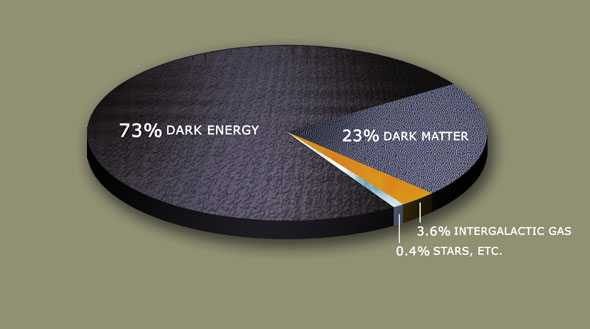 |
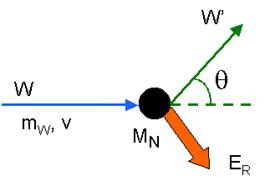 |
| The energy content of our Universe. Dark matter (23%) remains an enigma, as is also dark energy. | Principle of WIMP detection by the nucleus of an EDELWEISS detector: the WIMP arrives left and creates a nuclear recoil (orange arrow) which is detected. |
Ultra-sensitive detectors
The signals induced by WIMPs would be of very weak energy (tens of keV) and very rare. To reach the required sensitivity, the researchers of Edelweiss have choosen detectors working at a very small temperature: 20mK, very near from the absolute zero of temperature.These detectors are named ionization-heat bolometers: during a WIMP interaction, they measure at the same time a temperature variation produced by the deposited energy - a few millionths of degree - and the number of produced electrons. This double measurement enables to distinguish WIMPs from residual radioactivity with an efficiency better than 99,98 %.
In order to reduce as much as possible the residual radioactivity, the experiment is located under the Frejus mountain, in the underground laboratory of Modane at the French-Italian border. Detectors are also strongly shielded by different screens.
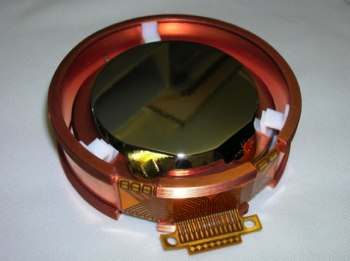 |
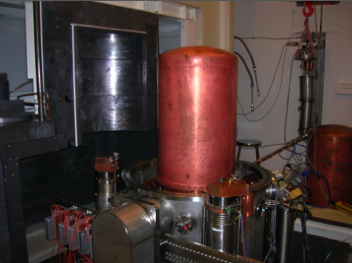 |
| Zoom on a bolometer: it is a Germanium cristal instrumented by electrodes and a small, utra-sensitive rectangular thermometer which you can see glued on the lateral side of the cristal. Several kinds of bolometers exist within EDELWEISS, with different performances. | A partial view of the experiment, showing some of the shielding screens, and the cryostat which keeps the detector temperature to 20 mK. Detectors are located inside the big coper cover. |
A worldwide competition
The Edelweiss researchers have not yet observed WIMPs but they could obtain excellent sensitivities with the version I of the experiment (three 320-gram detectors) and latter the version II (ten 400-g detectors). These results put the experiment among the first ones worldwide.The version III of the experiment, more sensitive (40 detectors og 800 grams with improved performances), is now starting data taking.
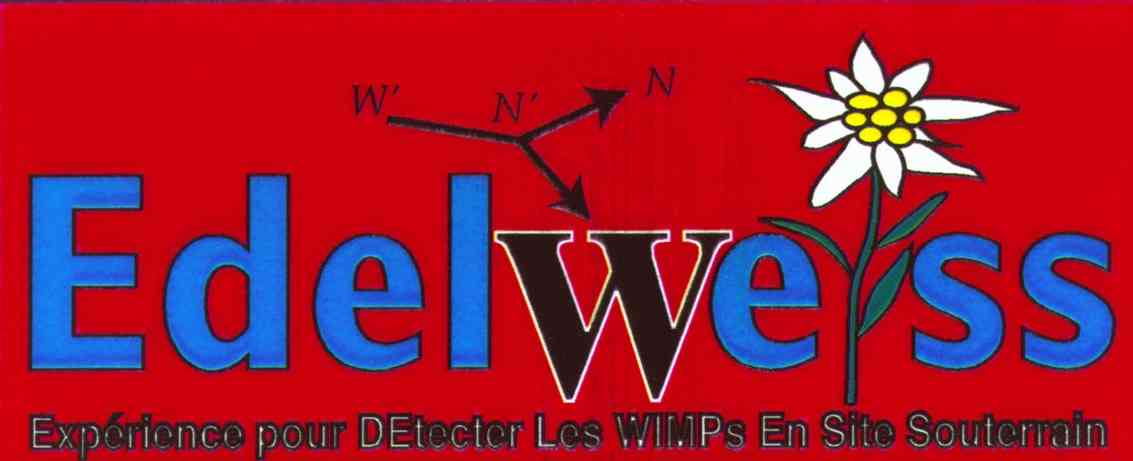 Edelweiss-III
Edelweiss-III